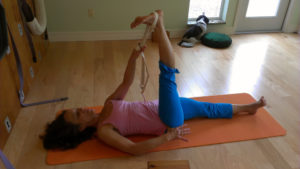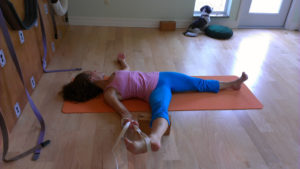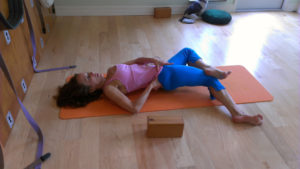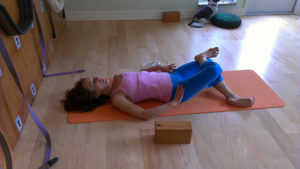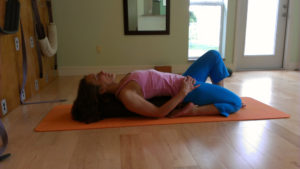Hips, hips, hips
By Nancy B. Loughlin
Published in News Press on December 12, 2013. Posted with Permission
There are approximately 285,000 hip replacements per year in the United States. And they could be avoided.
“Energetically, the hips are the point of locomotion in the body. Hip problems are rooted in the fear of moving forward in life,” said yogi Aadil Palkhivala.
They don’t require answers, but ask these questions daily: Who am I? Why am I here? Where am I going?
If people retreat into lives of comfortable mediocrity, seek similarity because of insecurity and continually suffer with Like Me Syndrome, these choices will eventually impact the body in surprising ways.
Opening the hips allows the body to move ahead and take the next step, Palkhivala said.
Palkhivala’s hip-rejuvenating Purna Yoga Hip Opening Series is to be practiced daily with intention and attention to the subtle movements. If you have no yoga experience, these moves should not be attempted without instruction from a Purna yoga teacher.
Open the hamstrings: Lie on your back with legs long. Lift the left leg straight up until it is perpendicular to the floor using the fingertips or a strap. With intention, rotate the right inner thigh to the floor, and massage into the thigh hamstring with your right fingertips. Hold for 3-9 breaths. Switch sides.
- Open the abductors: While lying on your back with legs long, lift the left leg to the previous position with your fingertips or a strap. Drift your foot across the body until it is over your right shoulder. Hold for 2-3 breaths before switching sides.
2. Open the adductors: While lying on the floor, lift the left leg until it is perpendicular to the floor. While holding the toes with your fingertips or a strap, allow the leg to fall open so the outer edge of the leg is parallel to the floor. Use your right fingertips to push the right hip away from the abdomen, and imagine a line from your left ankle to right hip, your mind pushing your hips open. Hold for 3-9 breaths before switching sides.
3. Open external rotators, psoas and iliacus: Lie on your back, your legs bent at 90-degree angles. Step the left foot wide and drop your knee in to the ground, spine and thigh in one line. Your leg should remain bent at 90 degrees. If there is no knee pain, place the outer right ankle on top of the left thigh. Hold for 3-9 breaths, and switch sides.
4. Open internal rotators and some external rotators: While lying on your back with legs long, cross your left ankle over your right thigh. Allow the left knee to drop open, thumb in the left hip crease, pulling the hip out of the body. If this movement is easy, bend the right leg at 90 degrees so your shins are parallel. Hold for 3-9 seconds before switching sides.
5. Finally, open the quadriceps and hip flexors: If your quads and hips are tight, sitting on blocks may be necessary. While seated on the floor or a block, bend your left leg to the chest, sole on the floor. Lift your buttocks and bend the right leg under the right thigh, the front of the shin and knee directly facing the floor. You may just stay here for 3-9 breaths. But, if your hips and quads are open, lie back onto the floor or a bolster. Switch sides.
While opening the hips, think about what you’re feeding them. According to Lisa Robinson, homeopathic consultant with Naples Homeopathic Healing Solutions, diet is the key.
Robinson traces most problems with joints, muscles, cartilage and tissue to the body’s high acidity. That high acidity comes from the typical American diet of red meat, processed carbohydrates, soda and sugar combined with inefficient hydration.
Consider instead minimal lean meats, herbs with calcium, dark green leafy vegetables and avocados.
“The key to keeping cartilage is not to deplete it, and it comes down to what you feed it,” she said. “We have to change the gut to alkaline.”
Robinson also recommends a daily regimen of anti-inflammatory herbs including turmeric, ginger, garlic, and cayenne pepper taken as either liquid of capsule supplements.
Next, lubricate the body, particularly the joints, with oils and fats. Olive, flax and coconut oils keep joints from getting dry.
Most importantly, before considering going under the knife for hip replacement (or any surgery), visit with a good homeopath. A homeopathic consultant, instead of treating symptoms with surgery or drugs, will get to why you have the condition.
The homeopath will see you as an individual person (not as the ailment) and recommend a course of action that is just right for you. Changes in movement, diet and lifestyle deliver.
For more information:
www.homeopathichealingsolutions.com

